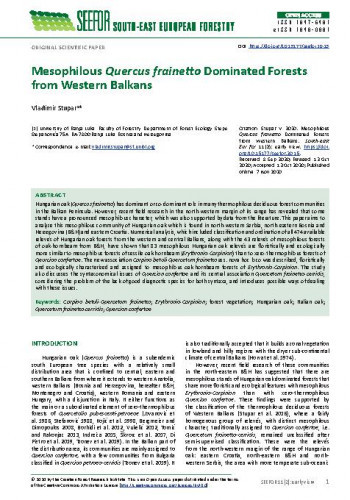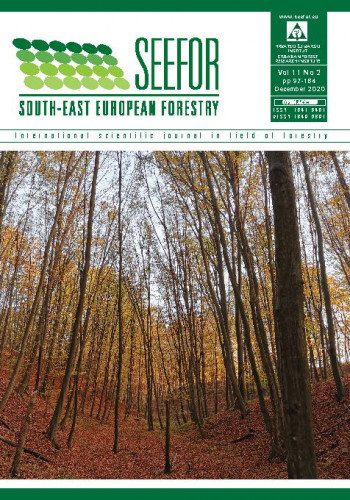Hungarian oak (Quercus frainetto) has dominant or co-dominant role in many thermophilous deciduous forest communities in the Balkan Peninsula. However, recent field research in the north-western margin of its range has revealed that some stands have a pronounced mesophilous character, which was also supported by data from the literature. This paper aims to analyze this mesophilous community of Hungarian oak which is found in north-western Serbia, north-eastern Bosnia and Herzegovina (B&H) and eastern Croatia. Numerical analysis, which included classification and ordination of all 474 available relevés of Hungarian oak forests from the western and central Balkans, along with the 43 relevés of mesophilous forests of oak-hornbeam from B&H, have shown that 83 mesophilous Hungarian oak relevés are floristically and ecologically more similar to mesophilous forests of sessile oak-hornbeam (Erythronio-Carpinion) than to xero-thermophilous forests of Qeurcion confertae. The new association Carpino betuli-Quercetum frainetto ass. nova hoc loco was described, floristically and ecologically characterized and assigned to mesophilous oak-hornbeam forests of Erythronio-Carpinion. The study also discusses the syntaxonomical issues of Quercion confertae and its central association Quercetum frainetto-cerridis, considering the problem of the lack of good diagnostic species for both syntaxa, and introduces possible ways of dealing with these issues.
Sažetak

 South-east European forestry : SEEFOR : international scientific journal in field of forestry : 11,2(2020) / editor-in-chief Ivan Balenović.
South-east European forestry : SEEFOR : international scientific journal in field of forestry : 11,2(2020) / editor-in-chief Ivan Balenović.